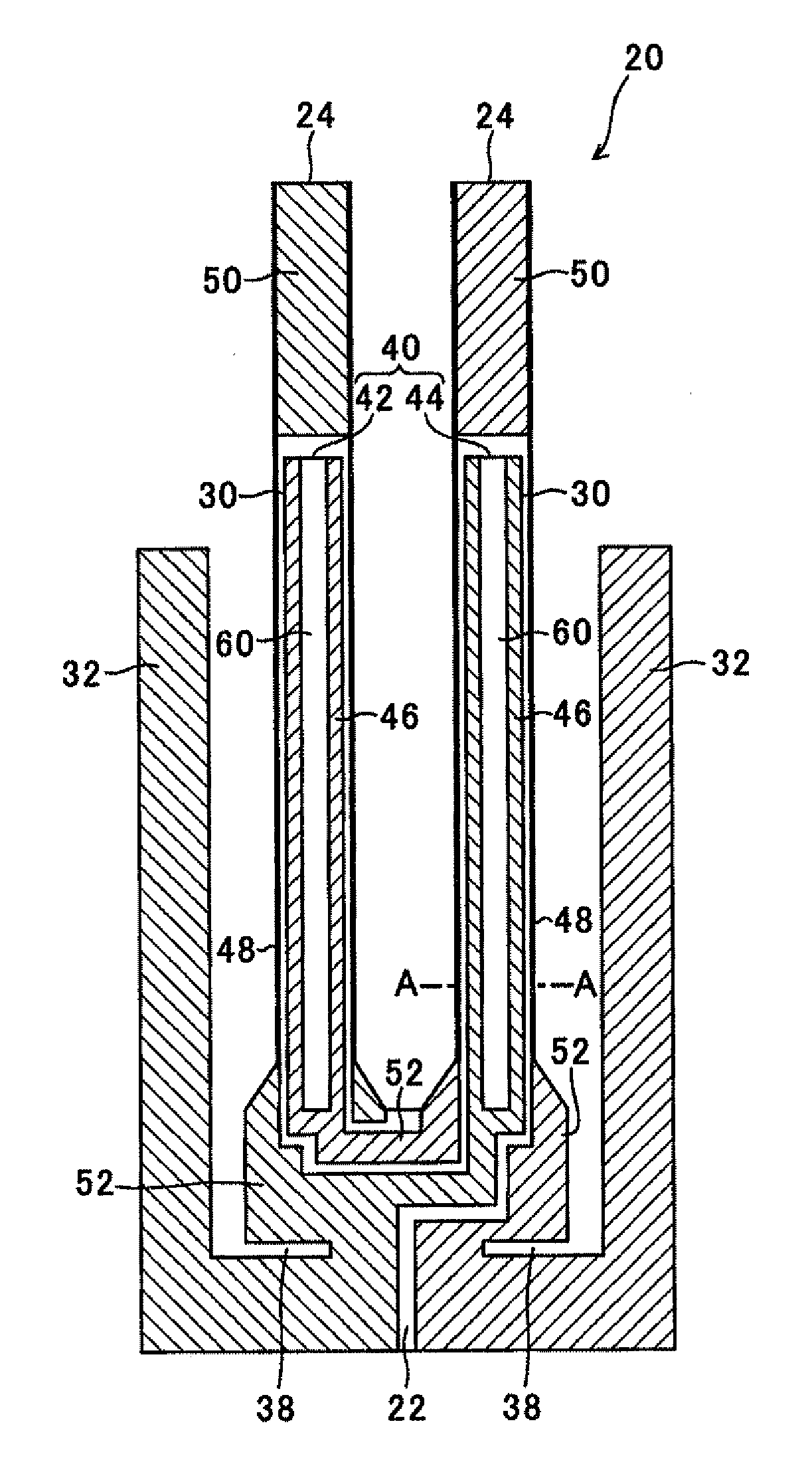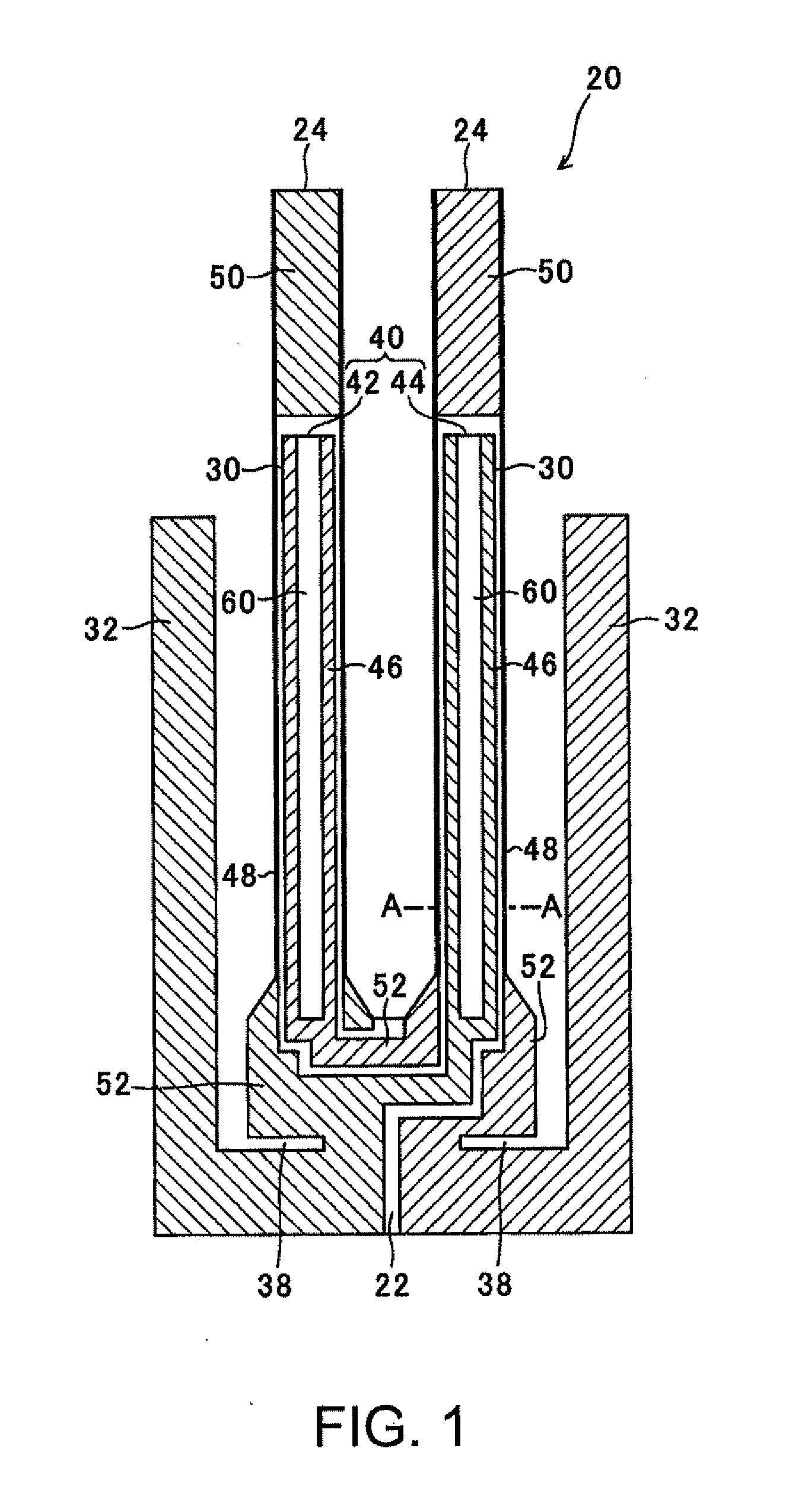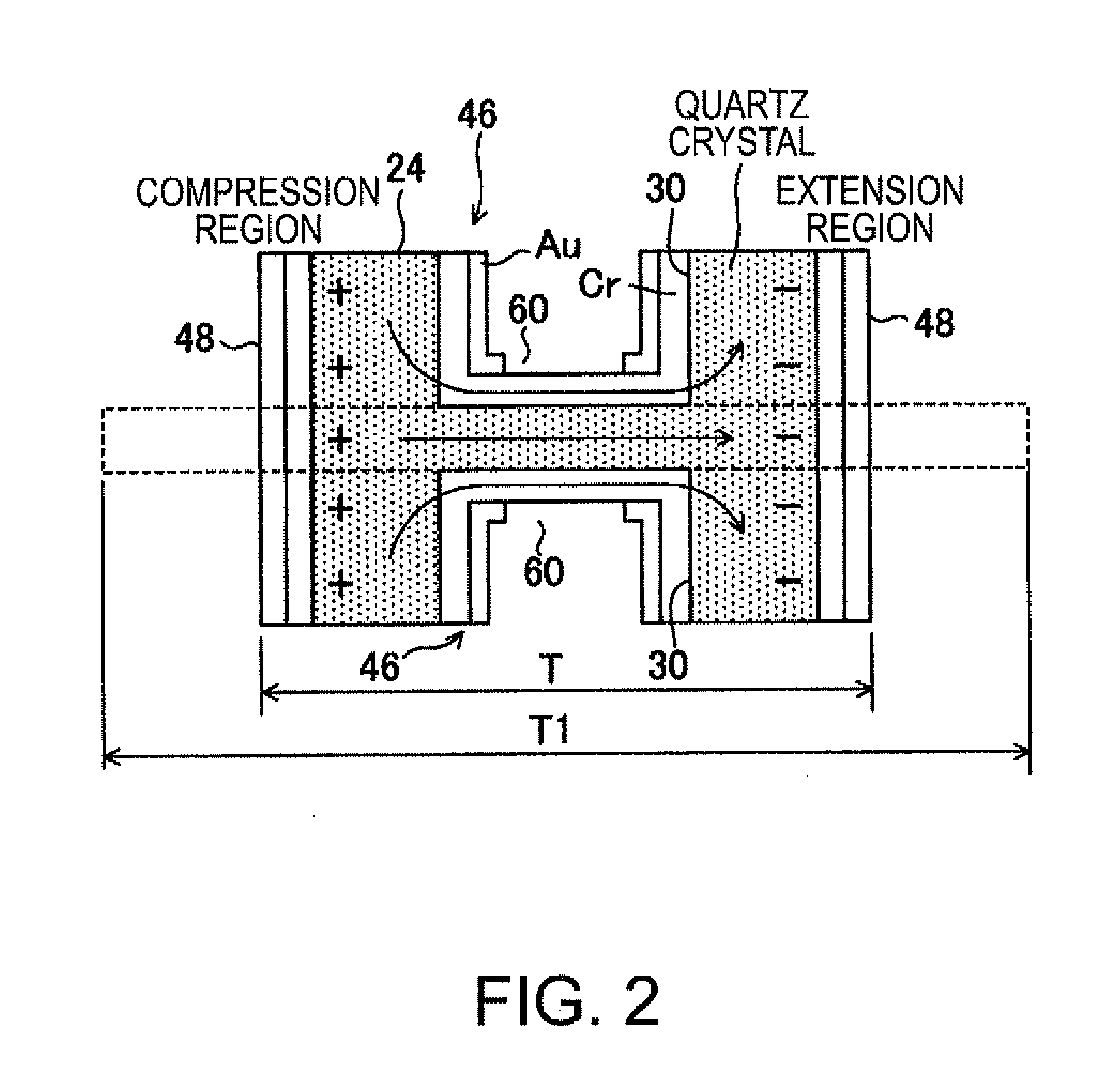Resonator element and oscillator
a technology of resonance element and oscillator, which is applied in the direction of oscillator, piezoelectric/electrostrictive/magnetostrictive device, semiconductor device, etc., can solve the problems of vibration energy loss, deterioration of resonance performance, etc., and achieves a longer relaxation time, lower relaxation frequency, and higher thermal conductivity
- Summary
- Abstract
- Description
- Claims
- Application Information
AI Technical Summary
Benefits of technology
Problems solved by technology
Method used
Image
Examples
first embodiment
[0033]A resonator element and an oscillator of the invention are described below in detail with reference to the accompanying drawings. In the following embodiments, a tuning fork type piezoelectric resonator element is described as an example of the resonator element. The resonator element of the invention, however, is not limited to the tuning fork type piezoelectric resonator element. The invention can be applied to any resonator elements as long as they produce temperature increasing portions and temperature decreasing portions so as to be responded to each other when they are vibrated. The resonator element is not limited to a piezoelectric body. The vibration mode is also not limited to a flexural vibration mode. FIG. 1 is a schematic view illustrating a structure of a resonator element of the invention. FIG. 2 is a cross sectional view taken along the line A-A of FIG. 1.
[0034]A resonator element 20 includes a base section 22, a pair of resonating arms 24 extending from the ba...
second embodiment
[0052]In the resonator element of the second embodiment, the recessed section is provided to the film having thermal conductivity higher than that of the material of the resonating body so as to cut off the heat transfer path between the compression region and the extension region in the film. As a result, only the long groove 30 functions as the heat transfer path. Likewise the resonator element shown in FIGS. 1 and 2, this structure causes the relaxation time to lengthen, lowering the relaxation frequency. As a result, a high Q value can be attained.
[0053]FIG. 4 is a plan view illustrating a featured part of a resonator element according to a third embodiment of the invention. As shown in FIG. 4, the resonating arm 24 of the third embodiment is structurally different from that of the first embodiment in that the first exciting electrode 46 formed inside the long groove 30 has an end section 62 in which the recessed section is not formed. Other structure is the same as that of the ...
third embodiment
[0054]In the resonator element of the third embodiment, the first exciting electrode 46 is formed on the bottom surface, which corresponds to the end section 62, of the long groove 30 of the resonating arm 24, and the recessed section 60 is formed on the bottom surface, excluding the end section 62 and a root section 61, of the long groove 30. In a plan view of the long groove 30, the recessed section 60 is surrounded by the end section 62 and the root section 61.
[0055]The recessed section 60a of the second embodiment can be applied to the resonating arms of the third embodiment.
[0056]The resonator element of the third embodiment can lengthen the relaxation time since the recessed sections 60 are provided to the resonating arms 24. Further, the recessed section 60 is not formed, but the electrode is formed at the end section of the long groove 30. This structure can reduce ohmic losses (resistance losses) with assured electric conduction.
[0057]FIGS. 5A and 5B are cross sectional vie...
PUM
| Property | Measurement | Unit |
|---|---|---|
| compression stress | aaaaa | aaaaa |
| extension stress | aaaaa | aaaaa |
| thermal conductivity | aaaaa | aaaaa |
Abstract
Description
Claims
Application Information
 Login to View More
Login to View More - R&D
- Intellectual Property
- Life Sciences
- Materials
- Tech Scout
- Unparalleled Data Quality
- Higher Quality Content
- 60% Fewer Hallucinations
Browse by: Latest US Patents, China's latest patents, Technical Efficacy Thesaurus, Application Domain, Technology Topic, Popular Technical Reports.
© 2025 PatSnap. All rights reserved.Legal|Privacy policy|Modern Slavery Act Transparency Statement|Sitemap|About US| Contact US: help@patsnap.com



